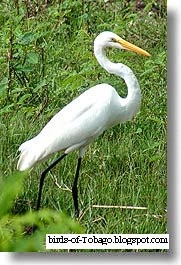 |
| Cattle Egret (Bubulcus ibis) |
Cattle Egret
Order : Ciconiiformes
Ciconiiformes compromise five to six families of large, long legged wading birds with long bills. They primarily occupy fresh or shallow saline water where they feed on fish, crabs, crustaceans, insects and carrion. Most nest in trees, though some nest in swamps or on the ground. the young are altrical (born bare and blind and dependant on parents for food) Most species are colonial, but the use of sound is limited or uncommon, the birds relying more on displays and rituals. Most are strong, often elegant flyers.
Family : Herons (Ardeidae)
The family Ardeidae is made up of Herons, Egrets and Bitterns where Egrets are considered simply as white Herons with decorative plumes and not a biologically separate group. Herons fly with their necks retracted not outstretched like some other members of the Ciconiiformes order. Typically Herons feed in shallow waters or marshes taking fish, frogs, crabs, and even small birds or mammals. They are widely distributed around the world but are most common in the tropics. The nest is made of twigs, usually placed in trees near water, and usually grouped in colonies called Heronries. Herons are sub divided into three groups. Typical Herons which include the genus Egratta, feed during the day. Night Herons, which are usually shorter legged and thick billed, are more active at dusk and during the night, and Tiger Herons which are six species of the more primitive Herons.
Name : Cattle Egret (Bubulcus ibis)
Length : 48 - 64 cm (19 - 25 in )
Local Names : Crabier, Cattle Gaulin
The Cattle Egret is a small white Heron of old world origins but has proved to be a successful coloniser and is now found in warmer parts of every continent except Antarctica, arriving as late as the 1950’s in the West Indies. It’s diet consists mainly of larger insects, especially grasshoppers, which are disturbed by grazing cattle or other livestock. Nesting takes place in colonies, often with other Herons, usually in Mangrove’s where a nest of sticks is placed facing water. Where numbers remain fairly small in Tobago, other Caribbean Islands experience breeding colonies in the thousands. It is all white, with buff neck and back plumage during breeding season.
#Cattle Egret #Bubulcus ibis #Egrets #Herons #Ardeidae #Ciconiiformes #Egratta #bird #birds of Tobago
Bird identification pictures


































